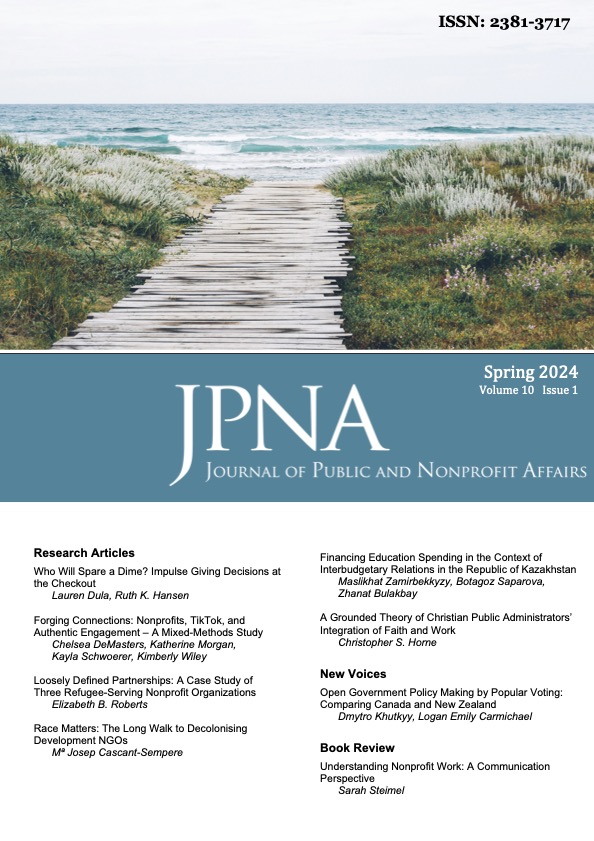Open Government Policy Making by Popular Voting: Comparing Canada and New Zealand
DOI:
https://doi.org/10.20899/jpna.sk21ph17Keywords:
open government, policy making, voting, Canada, New ZealandAbstract
The connection between open government policy and popular voting is understudied, yet it can reveal interesting patterns of policymaking that blend agenda setting, policy formulation, and decision-making in semiformalized fluid forms. This inquiry investigates the link between policy voting and open government by comparing the case studies of cocreating open government partnership national action plans in Canada and New Zealand. It examines the role of voting within the policy cycle of open government as a system of governance comprised of transparency, participation, accountability, and civic education. It further employs an exploratory mixed-methods approach of analyzing applied reports, official documents, social media campaigns, and expert interviews. It was found that not the voting format but the government’s approach to interaction with stakeholders is associated with the diverging patterns of open government in the two countries.
Downloads
Published
Issue
Section
License
Authors who publish with this journal agree to the following terms:
- Authors retain copyright and grant the journal right of first publication with the work simultaneously licensed under a Creative Commons Attribution License that allows others to share the work with an acknowledgment of the work's authorship and initial publication in this journal.
- Authors are able to enter into separate, additional, contractual arrangements for the non-exclusive distribution of the journal's published version of the work (e.g., post it to an institutional repository or publish it in a book), with an acknowledgment of its initial publication in this journal.
- Authors are permitted and encouraged to post their work online (e.g., in institutional repositories or on their website) prior to and during the submission process, as it can lead to productive exchanges, as well as earlier and greater citation of published work (see, The Effect of Open Access).







